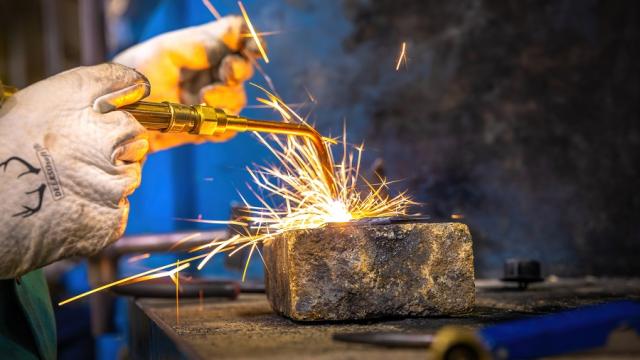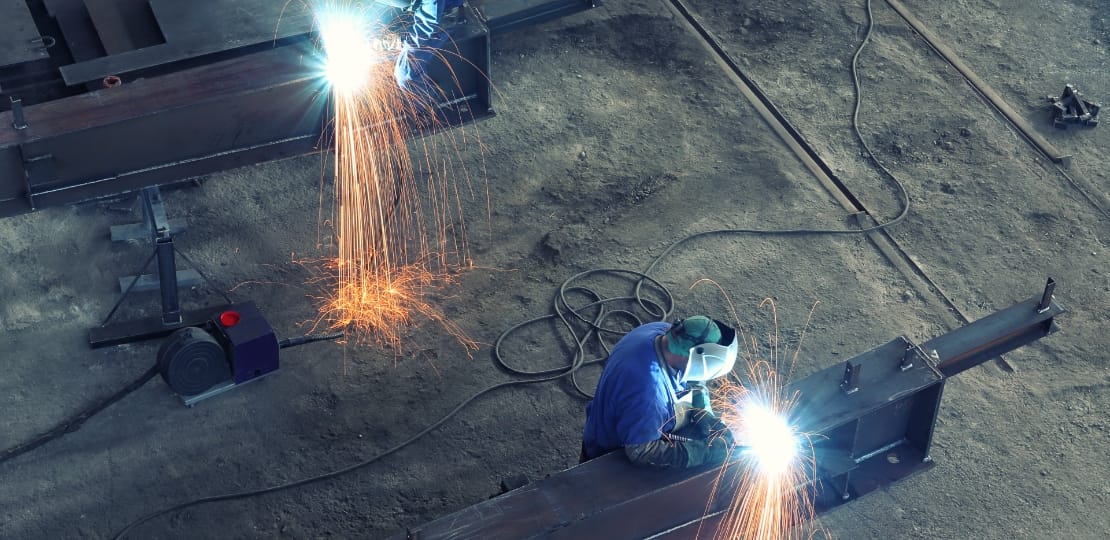Usual Welding Repair Issues and Exactly How to Address Them Effectively
Welding repair work typically experience a series of problems that can endanger the stability of the last item. Usual troubles consist of poor infiltration, porosity, and imbalance, amongst others. Each defect presents one-of-a-kind challenges that call for details methods for resolution. Comprehending these concerns is essential for welders intending to boost their results and skills. This conversation will certainly check out these common welding repair issues and efficient methods to address them.
Insufficient Infiltration
Inadequate infiltration happens when the weld steel falls short to totally fuse with the base product, resulting in weak joints and potential architectural failures. This issue commonly comes from insufficient warm input, inaccurate electrode angle, or improper welding rate. Welders may experience inadequate penetration because of a miscalculation of the essential criteria for a specific product thickness or kind. Additionally, contamination on the base product's surface can prevent efficient bonding, exacerbating the problem. To address poor infiltration, welders must assure proper setups on their equipment and maintain a tidy work surface. Normal examination of welds is recommended to recognize any shortages early, enabling prompt modifications and the avoidance of compromised architectural integrity in welded settings up.
Porosity
Porosity is an usual flaw in bonded joints that materializes as tiny gas bubbles entraped within the weld metal. This flaw can jeopardize the stability of the weld, leading to decreased toughness and possible failing under tension. Montana Mobile Welding and Repair Belgrade Welding. Porosity usually emerges from contamination, dampness, or inappropriate welding techniques, which allow gases to get away right into the liquified weld pool. To attend to porosity, welders should assure proper surface area preparation, preserve a tidy working setting, and make use of appropriate welding parameters. Additionally, selecting the best filler material and protecting gas can reduce gas entrapment. Routine examination and screening of welds can assist recognize porosity early, guaranteeing timely rehabilitative actions are taken, thereby protecting the quality and dependability of the bonded framework
Misalignment
Imbalance in welding can emerge from numerous variables, consisting of inappropriate configuration and thermal growth. Comprehending the origin triggers is important for reliable resolution. A number of improvement methods are offered to realign components and assure architectural stability.
Root causes of Misalignment
Welding imbalance commonly originates from a range of underlying problems that can compromise architectural stability. One primary reason is inappropriate fit-up of parts before welding, which can lead to gaps and irregular surface areas. Variants in thermal expansion throughout the welding procedure can additionally cause distortion, particularly if the products being signed up with have different coefficients of growth. Furthermore, inadequate securing and fixturing may fail to hold elements securely in position, resulting in activity during welding. Inadequately kept tools, consisting of welding makers and tools, might introduce disparities in the weld bead, additional contributing to imbalance. Operator mistake, stemming from inadequate training or experience, can also play a considerable function in developing misaligned welds.

Modification Techniques Offered
Attending to misalignment successfully needs a combination of restorative methods tailored to the certain problems at hand. One typical technique is the use of fixtures or jigs to hold elements in the appropriate setting during welding, making sure regular alignment. Additionally, pre-heating the products can help in reducing distortion and enhance fit-up. For significant misalignment, mechanical adjustment techniques, such as utilizing hydraulic jacks or clamps, can be used to deal with the placement prior to welding. Post-weld warm treatment might additionally be needed to ease stress and anxieties triggered by imbalance. Cautious examination and adjustment throughout the configuration phase can protect against imbalance issues from coming to be substantial issues, promoting a smoother welding process and improving general architectural stability.
Distortion
Distortion is an usual obstacle in welding that can develop from various variables, consisting of uneven home heating and air conditioning. Understanding the reasons for distortion is crucial for implementing efficient prevention methods. Resolving this concern not only improves structural stability yet also enhances the overall top quality of the weld.
Root causes of Distortion
When subjected to the extreme warm of welding, products often undertake adjustments that can bring about distortion. This sensation mainly arises from thermal expansion and tightening throughout the welding procedure. As the weld location warms up, the product increases; upon air conditioning, it acquires, which can create inner tensions. In addition, uneven heating across a workpiece can exacerbate these tensions, resulting in warping or bending. The kind of material also plays a considerable duty; steels with varying thermal conductivity and coefficients of growth may respond differently, leading to unpredictable distortions. Inadequate joint layout and poor fixturing can add to imbalance during welding, enhancing the possibility of distortion. Comprehending these reasons is necessary for reliable welding repair service and prevention strategies.
Prevention Techniques
Efficient prevention strategies for distortion throughout welding focus on controlling heat input and making sure correct joint layout. Keeping a regular heat input assists to minimize thermal growth and tightening, which can lead to distortion. Making use of techniques such as pre-heating the workpiece can likewise reduce the temperature level slope, promoting consistent heating. Additionally, picking suitable joint layouts, such as T-joints or lap joints, can improve security and decrease stress and anxiety concentrations. Applying proper fixturing to safeguard the work surfaces in area additionally help in preserving placement during the welding procedure. Lastly, staggered welding series can disperse warm more equally, stopping local distortion. By using these strategies, welders can substantially decrease the chance of distortion and boost the general high quality of their welds.
Cracking
Cracking is a common problem come across in welding repairs, commonly arising from various factors such as incorrect cooling rates, material choice, or poor joint prep work. The occurrence of fractures can greatly jeopardize the honesty of the weld, bring about possible failures during operation. To resolve this concern, welders have to first examine the source, making sure that products are compatible and appropriately chosen for the details application. Additionally, managing the cooling rate during the welding process is vital; fast air conditioning can cause anxiety and bring about cracking. Correct joint style and prep work additionally contribute to lessening the danger. Carrying out these methods can improve weld quality and sturdiness, eventually reducing the likelihood of fracturing in completed weldments.

Insufficient Combination
A significant concern in welding repair work is insufficient combination, which takes place when the weld steel does twi welding not sufficiently bond with the base material or previous weld passes - Belgrade. This issue can lead to weaknesses in the joint, potentially compromising the honesty of the welded framework. Variables contributing to incomplete blend include not enough warm input, inappropriate welding technique, and contamination of the surfaces being signed up with. To resolve this issue properly, welders ought to ensure correct pre-weld cleansing and surface preparation, in addition to readjust their welding parameters to accomplish adequate infiltration and fusion. Routine inspection throughout the welding process can additionally help determine insufficient fusion early, enabling prompt restorative measures to enhance the general top quality of the weld
Overheating
While welding repair work can boost architectural integrity, overheating presents a click significant challenge that can result in material deterioration. Extreme warm during welding can alter the mechanical buildings of steels, leading to minimized toughness, increased brittleness, and bending. This sensation is especially important in high-stress applications where architectural dependability is vital. Determining overheating can involve aesthetic assessments for discoloration or distortion, as well as keeping an eye on temperature during the welding procedure. To minimize the dangers connected with overheating, welders should use proper methods, such as controlling heat input, readjusting travel rate, and utilizing suitable filler materials. Furthermore, carrying out pre- and post-weld heat therapies can aid bring back product residential properties and improve the general high quality of the repair, ensuring long-lasting performance and security.
Regularly Asked Concerns
What Are the Common Indications of a Welding Problem?

Just How Can I Examine My Welds for Top quality?
To examine welds for quality, one can utilize visual evaluations, ultrasonic testing, and radiographic methods. Each technique guarantees structural honesty, determines issues, and validates adherence to defined criteria, eventually improving the dependability of the welded joints.
What Security Safety Measures Should I Take While Welding?
When welding, one ought to prioritize safety and security by putting on ideal individual protective equipment, guaranteeing proper ventilation, securing combustible products away, preserving a clean work space, and understanding environments to stop injuries and mishaps.
Can I Repair a Weld Without Renovating the Entire Joint?
Fixing a weld without remodeling the whole joint is feasible, depending on the damage (Welding). Strategies such as grinding, adding filler product, or utilizing a welding procedure can successfully deal with specific problems while preserving the bordering structure
What Equipment Are Necessary for Effective Welding Services?
Vital tools for efficient welding repairs include a welding equipment, cable brush, mill, protective equipment, clamps, and pop over to these guys filler materials. Each device plays a crucial function in guaranteeing quality and safety and security throughout the repair work procedure. Porosity normally arises from contamination, wetness, or inappropriate welding methods, which allow gases to get away right into the molten weld swimming pool. Badly maintained equipment, consisting of welding devices and devices, might introduce incongruities in the weld bead, additional adding to imbalance. When subjected to the extreme heat of welding, products frequently undertake changes that can lead to distortion. Fracturing is a common issue encountered in welding repair work, usually resulting from various factors such as incorrect cooling prices, product option, or poor joint preparation. A significant problem in welding fixings is insufficient fusion, which happens when the weld steel does not sufficiently bond with the base product or previous weld passes.